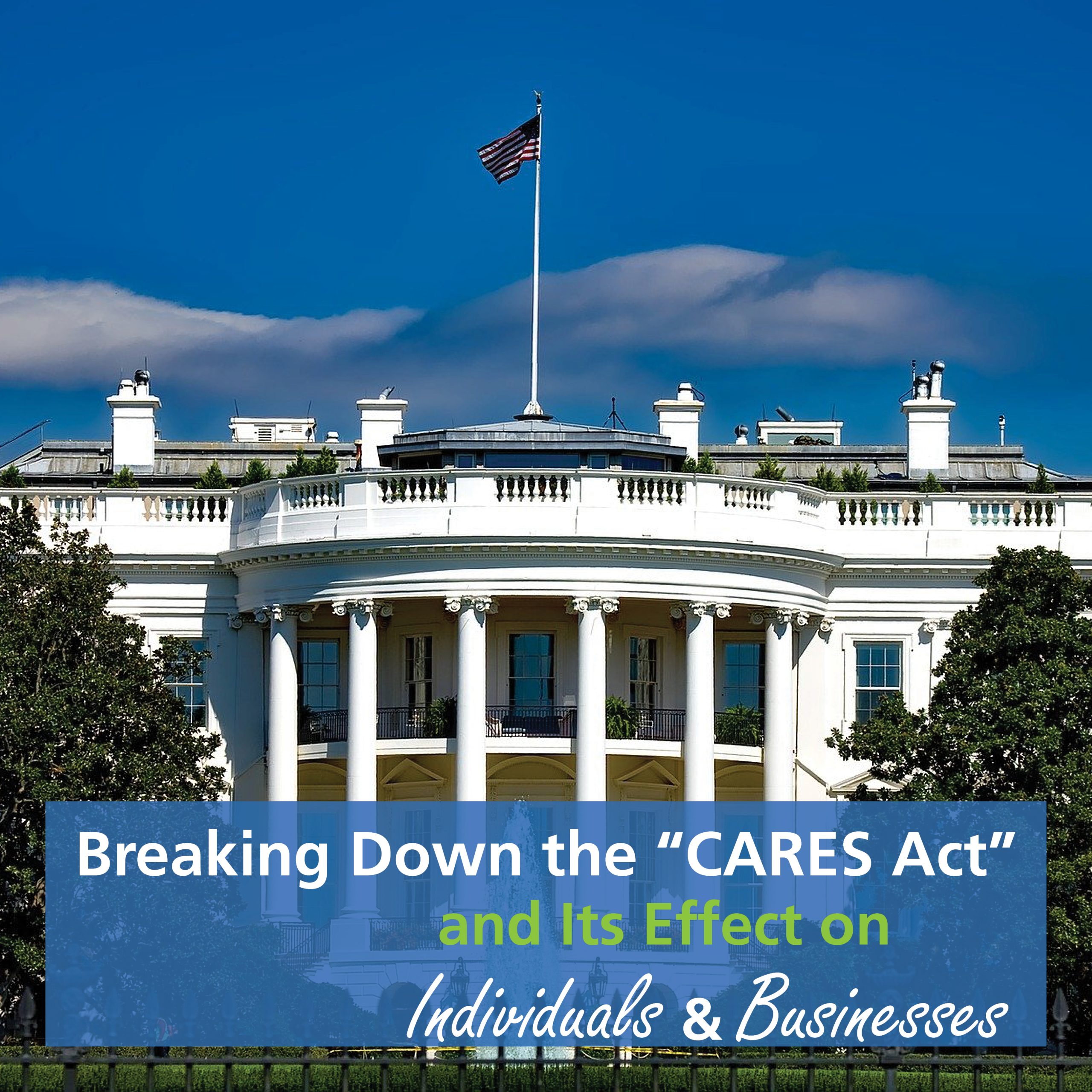Breaking Down the “CARES Act” and Its Effect on Individuals and Businesses

Three weeks ago, the American economy was reaching historical highs. Presently, our economy is drawing comparisons to the aftermath of 9/11 and the Great Recession of 2008. The White House and both branches of Congress are setting aside bipartisan barriers in hopes of bridging the gap and redirecting the trend towards a positive economic prognosis.
The Act – known as the “Coronavirus Aid, Relief, and Economic Security Act” or, in short, the “CARES Act” – aims to keep workers paid and employed, enhance our nation’s health care systems, and stabilize our economy. Late Wednesday evening, the Senate unanimously approved this bipartisan breakthrough bill with an unprecedented $2 trillion coronavirus emergency relief package which is intended to serve as a life raft for individuals and businesses nationwide. Today, the House is expected to approve the bill by voice vote and send it to President Trump, who is poised to sign the bill. Here are some of the highlights of the Act’s provisions:
For individuals and families:
- Furloughed Workers: the Act will replace salaries of furloughed workers for 4 months, rather than the 3 months of salaries initially proposed; furloughed workers will receive their respective states’ standard unemployment amounts, plus a $600 per week addition
- Temporary and “Gig” Workers: furloughed “gig” workers, such as Uber drivers, will be covered under relief offered to furloughed workers
- One-time Payments: the package will provide one-time payments of $1,200 per adult and $500 per child; these amounts are subject to reductions based on individuals’ and families’ income levels based on the most recent tax return filed (2018 or 2019), including reductions beginning at $75,000 per person and exclusions beginning at $99,000 per person (other thresholds exist for families’ aggregate income) and also covering those with no income or only Social Security income.
- Student Loans: permits students to defer their loan payments for 6 months and keep their Pell grants.
For businesses:
- Small Businesses: $367 billion allocated for small businesses to keep making payroll while employees are forced to stay at home
- Large Industries: $500 billion for guaranteed, subsidized loans
- “Employee Retention”: approximately $50 billion in tax credits available to companies that retain employees on payroll and cover at least 50% of retained employees’ paychecks
- Social Security: companies may defer payment of the 6.2% Social Security payroll tax
- SBA Grants: $10 billion is SBA emergency grants of up to $10,000 each to provide immediate relief for small businesses’ operating costs
- SBA Loans: rent, mortgage, and utility costs are eligible for SBA loan forgiveness; $17 billion to cover 6 months of payments for small businesses with existing SBA loans; up to $10M (typically $5M) loan amounts to qualified small businesses or large businesses with COVID-19 impacts uncollateralized and without fees or prepayment penalties
The extent of the impact the Act and its relief will have on the economy as a whole is uncertain. One promising precursor is that the stock market reacted positively Wednesday with the NYSE showing a 3.1% improvement. This minor uptick is at least a sign that investors believe in the package’s promising outcome.
We will be digging into the depths of this 880-page bill and will have more information forthcoming. For more information or questions, please reach out to either Mike Perkinson or Dan Tobergte.
Media Contact
- office 513.629.2896
